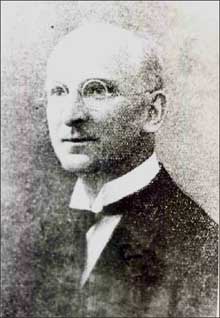Hohmann, Walter (1880–1945)

Walter Hohmann was a German rocket engineer who was a prominent member of the Verein
für Raumschiffahrt (German Rocket Society) in the late 1920s but broke
off contact with it when it was taken over by the military. His book Die
Erreichbarkeit der Himmelskörper (The Attainability of Celestial Bodies),
published in 1925, was so technically advanced that it was consulted decades
later by NASA when planning its first interplanetary probes. In it, he describes
his "power tower" spacecraft, a huge cone-shaped rocket with an egg-shaped
manned capsule at the top, and, more importantly, the interplanetary transfer
orbits that have been named after him (see Hohmann
orbit). He also wrote popular works in the field of rocketry, as did
his contemporaries Willy Ley and Max Valier.
Hohmann died in a hospital in Essen shortly before the end of World War
II as a result of stress experienced during the intense Allied bombing of
the city.


